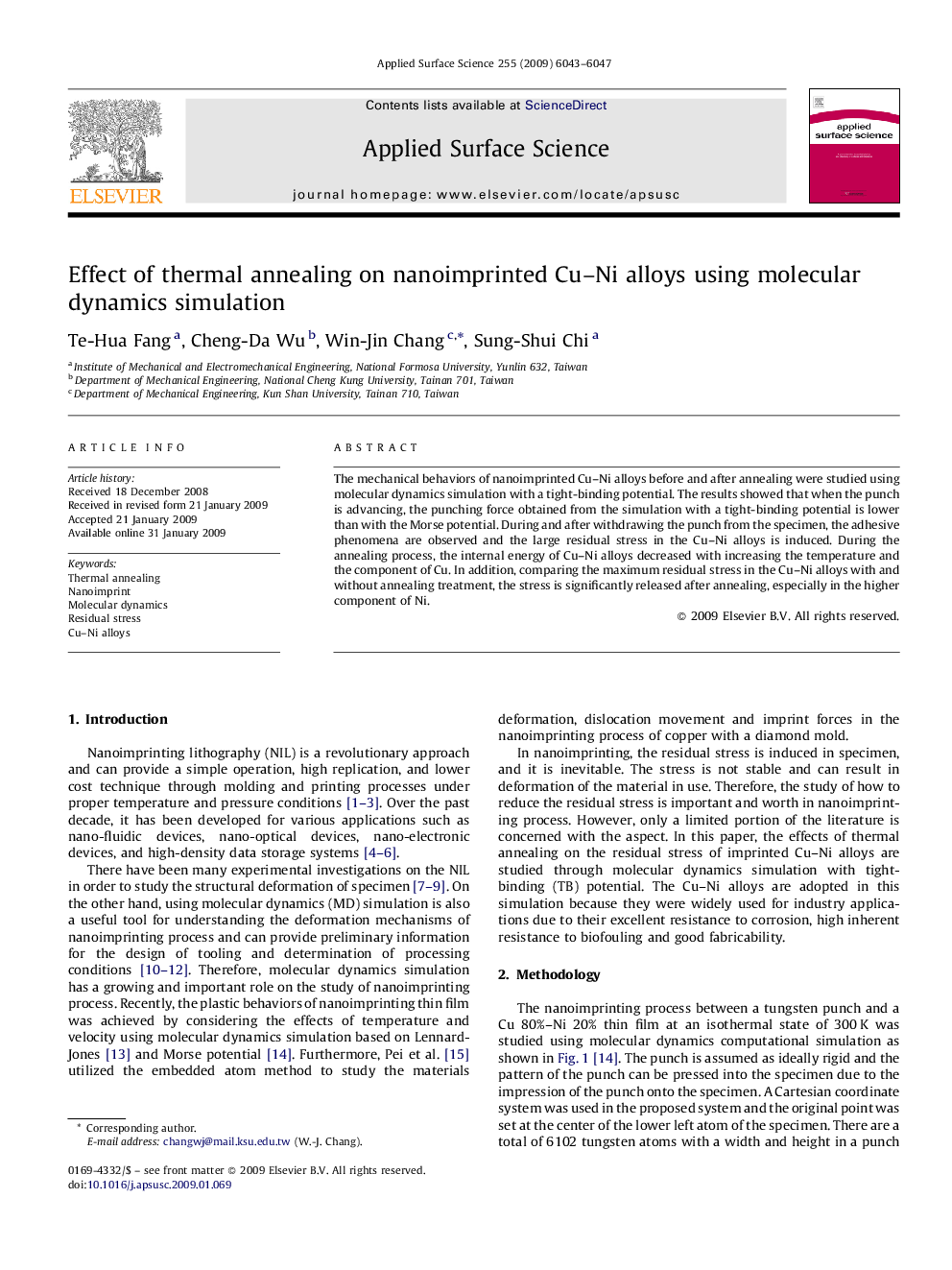| Article ID | Journal | Published Year | Pages | File Type |
|---|---|---|---|---|
| 5367325 | Applied Surface Science | 2009 | 5 Pages |
Abstract
The mechanical behaviors of nanoimprinted Cu-Ni alloys before and after annealing were studied using molecular dynamics simulation with a tight-binding potential. The results showed that when the punch is advancing, the punching force obtained from the simulation with a tight-binding potential is lower than with the Morse potential. During and after withdrawing the punch from the specimen, the adhesive phenomena are observed and the large residual stress in the Cu-Ni alloys is induced. During the annealing process, the internal energy of Cu-Ni alloys decreased with increasing the temperature and the component of Cu. In addition, comparing the maximum residual stress in the Cu-Ni alloys with and without annealing treatment, the stress is significantly released after annealing, especially in the higher component of Ni.
Related Topics
Physical Sciences and Engineering
Chemistry
Physical and Theoretical Chemistry
Authors
Te-Hua Fang, Cheng-Da Wu, Win-Jin Chang, Sung-Shui Chi,
